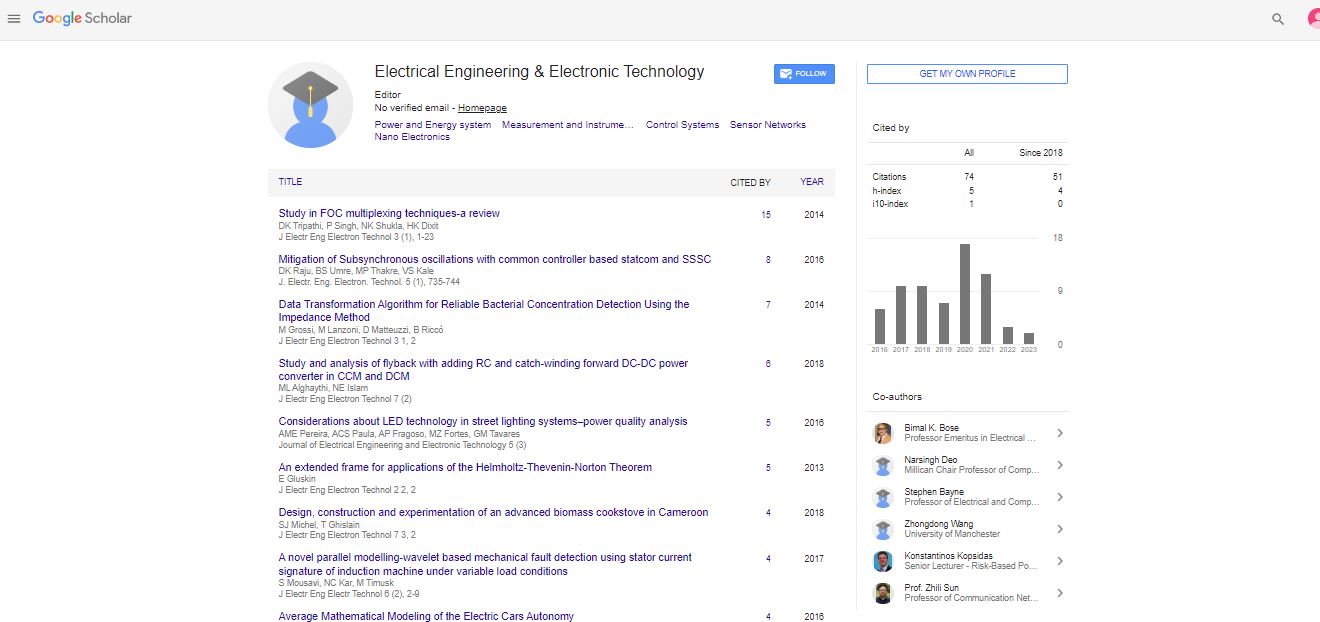Aluminum oxide interdigitated capacitors (AOIC) - Past, present and possible future in the biosensing applications
Luis Moreno Hagelsieb
Université catholique de Louvain, Belgium
: J Electr Eng Electron Technol
Abstract
Simple, low cost and low consumption devices are required in medical and agronomical applications and environmental monitoring. Producing a faster response, high response, highly sensitive, highly selective sensor devices for application in bacteria detection have become very critical. Current detection system takes minimum 2 hours (expensive devices) to one week, while some fast detectors can make detections in less than an hour but only when the concentrations of the target is high. In previous works at “Université catholique de Louvainâ€Â, high-performance sensors and MEMS with; very low power consumption and broad applications, were developed. In collaboration with its microelectronics laboratory, aluminum oxide interdigitated capacitors (AOIC) have been developed and successfully tested on DNA hybridization and on bacteria and spores detection test as well as on breathing monitoring. All of them have shown comparable results to the state of the art using existing standard biological protocols procedures. The related projects included also the deposit of nanoparticle functionalized nanostructured metal oxides (Al2 O3 , WO3 , SnO2 , and HfO2 ) directly onto an optimized AOIC with the aim of producing a high response, highly sensitive, highly selective sensor devices for application in bacteria and in gas detection (i.e. breathing and environmental). The market trends are well analyzed. This presentation will cover the complete story about this biosensor, how it was conceived, the applications results, comparative measurement to similar methods as well as its possible future developments.
 Spanish
Spanish  Chinese
Chinese  Russian
Russian  German
German  French
French  Japanese
Japanese  Portuguese
Portuguese  Hindi
Hindi 
